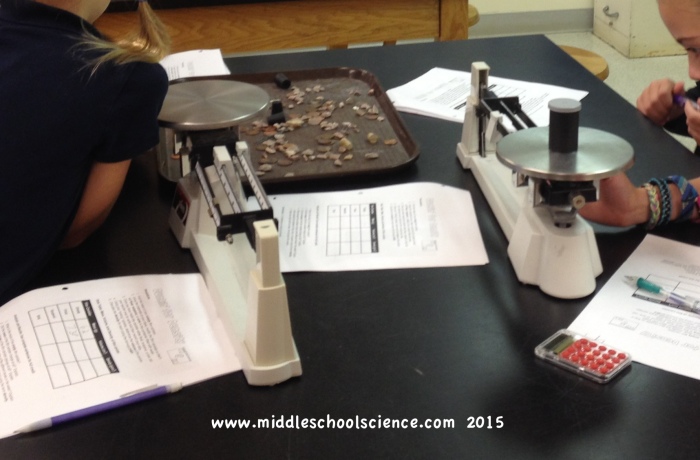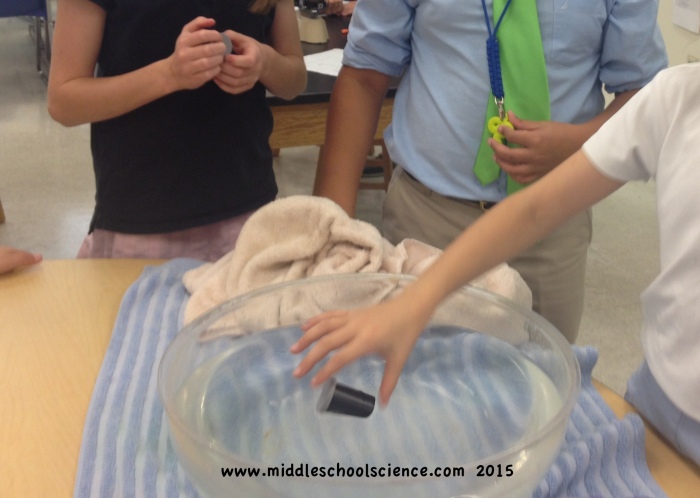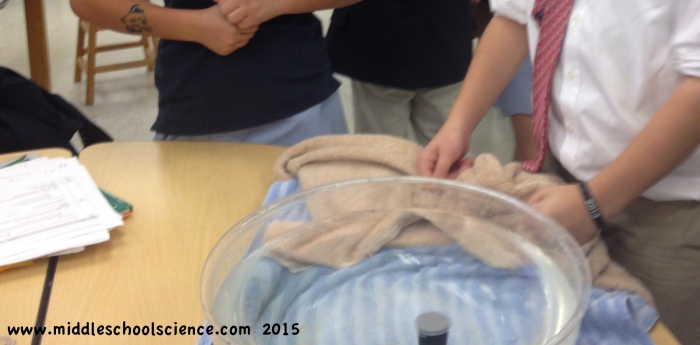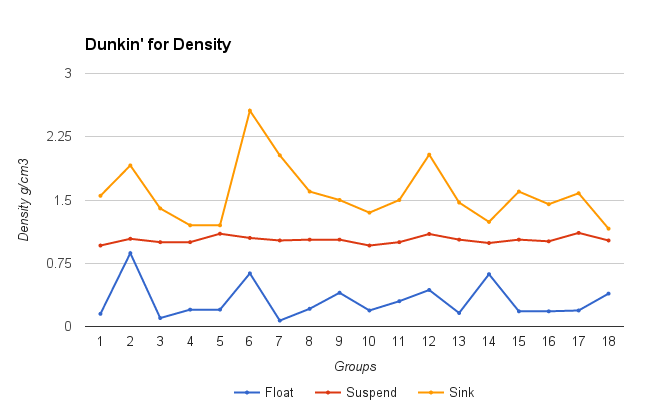
Updated for 2016: See blog entry
Introduction:
This is a wonderful problem solving and hands-on activity to use as part of your density unit. The students enjoy the challenge and have a solid understanding of density after completing this activity. Even though students quickly figure out how to make the canister float and sink, making the canister suspend is pretty challenging and requires a lot of trial and error and problem solving.
To qualify as suspending, the film canister needs to float just under the surface of the water, with a small portion of the top just breaking through. How I also verify that it is suspending is by pushing the film canister to the bottom of the tank, if it comes up very slowly to the surface, it counts – if it comes up quickly or stays towards the bottom, it doesn’t count. Students then need to figure out that if it comes up too quickly, they need to add to the mass, if it comes up too slowly, they need to remove some of the mass. It will take several tries to get it just right.

Materials:
- Dunkin’ for Density handout (1 page pdf) or (2 page pdf) and (link) to the original lesson from ScienceSpot.net
- Triple Beam Balances
- Container filled with water
- Towels – the more the better!
- Film canisters
- one canister per 2 people works well, they can reuse the canisters if you don’t have enough to give each set of lab partners 3 canisters
- if they reuse the canisters, be sure that they find the mass before they empty the contents
- An assortment of small objects such as pennies, paper clips, stoppers, small pebbles, etc…
- Calculators

Procedures:
- Introduce the Dunkin’ for Density Challenge – their goal is to make the film canister float, suspend, and sink by placing contents inside of the film canister.
- Many students will say that the canister will float with nothing in it, but they must place a few objects in it for it to count 😉
- On a side note, a mini history lesson on film and cameras is fun to discuss since most students have never used a camera that used film
- Explain the procedures, review how to use the TBB, note that the film canister must seal completely and be air tight so that water doesn’t enter, and also demonstrate how to use the dunk tank properly and to dry off the canister before finding the mass.
- Do not give the students the value for the volume of the film canisters until they have collected their data. If the students know the volume of the film canister, they may figure out the mass needed to make the film canister’s density close to 1.0 g/cm3.
- The value is approximately 39 mL or 39 g/cm3 – verify with a large graduated cylinder that the film canister can fit inside of – or use an overflow can to find the volume (link).
- I will give the volume to each set of lab partners individually and ask that they don’t share that information with the class.
- Once students have calculated the density, collect class data on a spreadsheet projected on the board/screen.
- Discuss results – why did the film canister float, suspend, or sink in the tank of water? What relationships did you notice?

For more lessons related to the Properties of Matter, click here (link)
Do the students use the same material, ex. pennies, for all three canisters, or do you allow them to switch materials for each trial?
LikeLike
Bonnie – they can add whatever combination of materials they would like to try for each canister, the only rule is that it has to be able to snap closed tightly so that water does not enter. ~Liz
LikeLike
This is a FANTASTIC lab that I have now used for the past 5 years.
LikeLike
Great to hear!
LikeLike